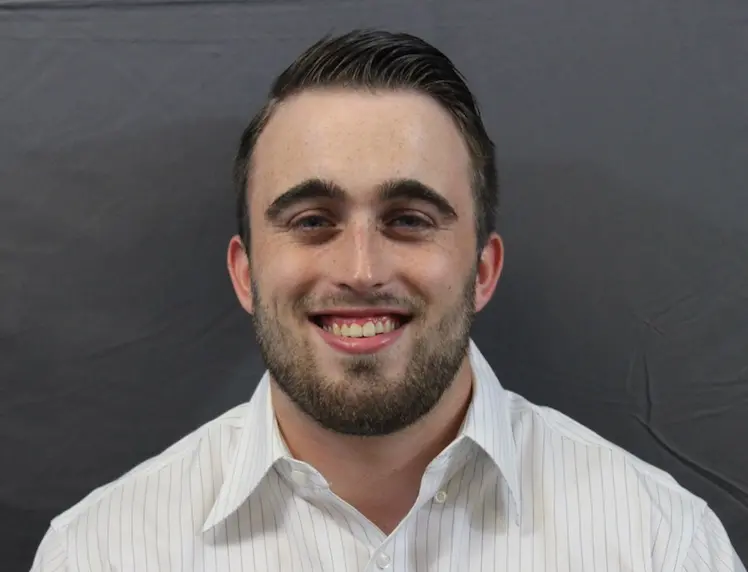When Brad Schwab started as a chemical and biological engineering undergraduate at the University of Wisconsin-Madison, he was certain that he would end up as a practicing engineer in industry. But when he was a sophomore, he decided to try his hand at research. “I just wanted to give it a shot. I had some friends who came into school already on a PhD track,” he says. “They knew they wanted to do that before starting their undergrad, and it’s not something growing up I had ever really thought about. So I decided I should give this research stuff a try.”
 Brad Schwab
Brad Schwab
Schwab joined the lab of John Yin, a professor of chemical and biological engineering. That decision led Schwab to a three-year research career that has culminated in the publication of a new paper in the journal Virus Evolution. Eventually, the research could play a part in predicting the severity of viral infections and developing potential treatments in “digital twins,” an important step in next-gen healthcare.
In his research project, Schwab took a computational model of the vesicular stomatitis virus (a “model” virus used in medical research) developed by one of Yin’s former graduate students and used it to simulate how various mutations affect the “fitness” of the virus, or how well virus particles can be made inside a cell.
Watching how viruses mutate and spread experimentally is extremely difficult, costly and time consuming. But using the computer model, Schwab was able to run hundreds of thousands of iterations, creating various scenarios to better understand how mutations and combinations of mutations affect how quickly a virus spreads and how many virus particles it makes.
“Because the models that we build are really based on the many decades of advances in molecular biology, biochemistry and our understanding of how viruses grow, we essentially translate biologists’ descriptions of the molecular processes into equations. And the equations are ones we can put on the computer, and we can begin to simulate,” says Yin.
 John Yin
John Yin
Being able to simulate the spread of viruses can help medical and public health researchers better understand virus progression and predict the potential impact of mutations on disease. Yin says it will be helpful in the emerging era of predictive health as well. In the near future, doctors will be able to create “digital twins” of patients—in other words, mathematical and computational representations of individuals based on their genetics, health history and other personal data. This will allow doctors to predict health outcomes and decide what interventions are most helpful.
An accurate digital model of how viruses spread and mutate also could help doctors understand how they might help individual patients. “This is a step in the direction of modeling viruses, like coronaviruses—eventually being able to say something about how human health may be altered by virus infections, and how one may best prepare to stop such infections,” says Yin.
Schwab graduated with bachelor’s degrees in chemical and biological engineering and applied mathematics in 2019. Ultimately, he did not decide to continue on in academic research, instead taking a position with AGC Biologics, a pharmaceutical company in Washington state where he currently manages a team of manufacturing science and technology (MSAT) engineers. But he says he’s proud of the work he did in Yin’s lab, which taught him many important lessons.
“In college, most of the problems you’re given in class are solvable; they have known answers. But in industry, some of the problems you get aren’t well defined, and no one really knows if there’s an answer,” he says. “You encounter the same thing in the lab; It was a huge help in developing that muscle early and learning that not everything’s a textbook problem with an answer key.”
Schwab says that he recommends all engineering students at UW-Madison, whether they aspire to go to graduate school or industry, should spend at least a semester in the lab. “Trying to tackle some of the complex problems that are being studied at UW-Madison can have a really beneficial impact on your ability to think abstractly and approach new problems,” he says.
John Yin is a Vilas Distinguished Achievement Professor and theme lead with the Wisconsin Institute for Discovery.
The authors acknowledge funding from the National Science Foundation (DMS-2151959) and the National Institutes of Health (OT2OD030524).
Featured image caption: A transmission electron micrograph of the vesicular stomatitis virus, the model virus a UW-Madison team used to computationally simulate viral fitness. Credit: National Institute of Allergy and Infectious Disease.